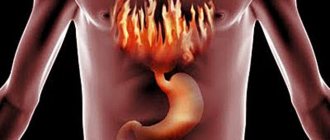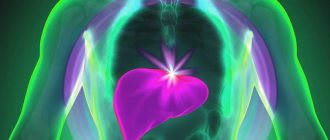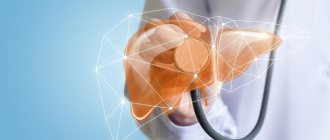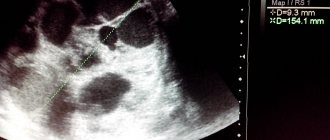Indications for liver biopsy
There is a myth among patients that a biopsy is performed only for liver cancer.
In reality, testing for pack changes is not the only indication for a biopsy; it is advisable:
- when determining the degree of organ damage;
- if previous tests showed the presence of a pathological process;
- for the purpose of assessing the effectiveness of treatment therapy;
- to analyze the degree of survival of the transplanted organ;
- causeless increase in bilirubin;
- analysis of the suitability of a potential donor liver for transplantation.
Biopsy sampling is required in the presence of pathological conditions:
- liver damage by alcohol;
- formation of adipose tissue on the liver;
- hepatitis B, C;
- autoimmune hepatitis;
- Wilson-Konovalov pathology;
- biliary cirrhosis.
For other diseases, it is better to use other diagnostic methods to minimize the chance of complications and serious side effects.
Alternative to biopsy
Liver elastometry is a more gentle procedure compared to biopsy. An alternative research method is performed using the Fibroscan apparatus. It allows you to analyze the structure of the internal organ, study morphological and functional indicators in various pathologies.
A significant advantage of elastometry is that it does not require lengthy preliminary preparation. In this case, the method eliminates the presence of unpleasant sensations. The procedure is indicated for chronic organ damage due to the high safety of the diagnostics performed. Another advantage of the alternative method is lower cost compared to biopsy. However, this does not affect the results obtained and their informativeness.
The feasibility of performing a liver biopsy is determined by the doctor based on the tests obtained and other methods of examining the internal organ. In order to avoid the development of complications, it is necessary to strictly follow all recommendations both at the preparation stage and after the manipulation. A complete history collection is the prevention of unpleasant consequences.
Contraindications to liver biopsy
Before prescribing a biopsy, the specialist carries out a number of additional diagnostic measures, which will allow the body to be checked for contraindications:
- nervous system disorders;
- unconsciousness of the patient;
- presence of fluid in the abdominal cavity;
- impaired blood clotting;
- allergy to anesthetics;
- problems with the permeability of vascular walls.
Each type of procedure has its own contraindications, so you need to consider them in more detail.
Contraindications
Before using the procedure for diagnostic purposes, it is necessary to ensure that the patient is approved for it. Taking a liver biopsy is contraindicated if:
- there is no safe access to the tissues of the affected organ;
- ascites develops, characterized by the accumulation of fluid in the abdominal space;
- there are mental disorders;
- the patient is unconscious;
- the permeability of the vascular walls is impaired;
- there is a predisposition to developing allergies to anesthetic drugs;
- purulent processes in the liver and inflammation are noted.
In addition, a biopsy is under no circumstances performed if the cancerous lesion of the organ is accompanied by cirrhosis in the stage of decompensation.
Types of biopsy
To take part of the liver tissue, specialists use various techniques, the choice of which is based on the characteristics of the disease and the patient’s condition. All these methods have individual advantages and disadvantages.
- Laparoscopic biopsy. It is carried out exclusively in the operating room. For this, general anesthesia is used. The specialist makes several holes in the right hypochondrium and inserts a working tool and a video camera through them. The process is controlled by broadcasting the image on the screen.
- Transvenous biopsy. It is performed for those patients who, for various reasons, cannot undergo abdominal surgery. This is a common contraindication for impaired blood clotting. The doctor makes an incision in the jugular vein, connects a catheter, moves it to the veins of the organ and removes a certain amount of material.
- Liver puncture biopsy. A syringe is used to carry out the procedure. A puncture is made between the ribs, tissue is taken for further analysis of the liver for a biopsy. You can control the movement of the needle using ultrasound.
- Open biopsy. It is performed during surgery, when a specialist removes a tumor or element of the affected organ.
Read here: Lung cancer in men and its causes
Each method has different effectiveness; puncture biopsy is most often used, since it is easy to implement and the effectiveness reaches 98%. The transvenous type is performed under anesthesia; the entire process lasts no more than 60 minutes. The patient is first connected to an electrocardiographic machine, since there is a possibility of arrhythmia.
Carrying out the procedure
The biopsy is performed as follows:
- First you need to lie on your back so that nothing interferes and there is complete comfort. The doctor asks you to place your right hand behind your head. You should not move while taking the liver element, so as not to disrupt the procedure and harm yourself.
- If the patient behaves nervously and is worried before the test, which is quite justified, given his painful liver condition and the presence of certain diseases, then he is given sedatives and sedatives that help him put his nervous system in order.
- The skin where the biopsy will be performed is disinfected with an alcohol composition, and then anesthesia is performed so that the procedure goes as well as possible and causes very little inconvenience to the patient. A small incision is made in the skin through which a needle is inserted. Through a needle you can obtain a particle of the liver, which will then be used to study its qualities.
Percutaneous biopsy
This type of biopsy is performed very quickly. The place that will be pierced is made insensitive by injecting anesthesia for local anesthesia: the person remains conscious. But there is no particular pain, and the procedure does not cause suffering to the patient. There are two options for needle insertion:
- The method is called "blind". Using ultrasound, they look at where to insert the needle so that it hits the right place. But there is no control over the correctness of the hit.
- There is not only an ultrasound check, but also a CT scan during needle placement.
The results of such a study can show a lot. There is almost a 100% guarantee that this procedure will help identify the smallest deviations from the norm. To ensure that the tissue carries as much information as possible, 1 to 3 cm of material is taken, which will be further studied at the cellular level.
Ultrasound-guided fine-needle biopsy
The skin and internal tissues are first treated with an anesthetic drug to eliminate all pain. Despite the fact that the needle is taken quite thin, it will still be noticeable to a person. This type of study will show not only inflammatory processes, the presence of serious damage due to cirrhosis or other ailments, but also the malignancy of tumors, which at first glance are difficult to determine. For people with cancer, the procedure does not pose any danger, since there is no transfer of negative cells to other tissues of the organ.
Laparoscopic biopsy
This type of biopsy is needed if there is a need to examine not the entire organ, but a small fragment of it. A laparoscope with a camera is inserted into the abdominal cavity, which will display the liver on the screen. The doctor can see the right place, from where he will take the fragment. The study is important when the abdomen is filled with excess fluid for no particular reason, or when there are liver tumors. This procedure cannot be performed under local anesthesia, as it is quite painful. General anesthesia is given.
Features of preparation for a biopsy
Each procedure requires preparatory measures. A liver biopsy is no exception, so it is important to take the preparation carefully and responsibly.
Before performing a puncture, the following rules must be followed:
- 7 days before the procedure, you should stop using all medications aimed at reducing the inflammatory process.
- It is imperative that you inform your doctor about the use of anticoagulants.
- For several days (more than 3) you should not eat food that leads to increased gas formation. These foods include raw vegetables, brown bread, milk, and fruits. If the patient has problems with the functioning of the digestive system, you can take Espumisan; the active components of the drug reduce bloating.
- If the biopsy is scheduled for the morning, then in the evening you can eat until 21:00. Some experts recommend cleansing the body with an enema.
- An additional ultrasound is performed before the biopsy.
- Be sure to examine the blood for clotting.
- The physician should be aware of all possible allergic reactions and susceptibility to heart disease.
Almost all patients worry about the pain of the procedure, although it is almost imperceptible since it is performed under anesthesia.
How is a liver biopsy done?
The specialist notifies the patient about possible complications and discomfort. Liver biopsy is a rather complex procedure, so it is performed in a special room. In case of increased anxiety of the patient or excessive excitability, sedative medications can be used.
How is a liver biopsy done?
- The patient takes a position lying on his back, puts his right hand behind his head and remains absolutely still.
- The puncture area is treated with antiseptic agents, after which anesthesia is administered.
- The doctor makes an incision in the skin, inserts a needle through the hole to the required depth and collects a biopsy sample.
Read here: General dietary guidelines for liver cancer
The tissue fragment makes up 0.00002% of the total volume of the organ, because its size does not exceed 3 cm in length and 2 mm in diameter. The procedure will show a high level of efficiency if the studied material contains at least 3 portal tracts.
A needle biopsy takes about 15 minutes, although the tissue collection process lasts approximately 60 seconds. The transvenous version of the procedure has a longer duration, which is associated with the difficulty of access to the organ.
Results of histological and cytological studies
The taken material is sent for detailed analysis to the laboratory. Various methods are used for assessment; the most popular are the Metavir and Knodel methods. The first was created specifically for the study of affected tissues in hepatitis C. A biopsy determines the degree of the inflammatory process and the stage of the disease. The laboratory technician gives points from 0 to 4, which allows the specialist to further assess the patient’s condition.
Based on the stage of inflammation, the degree of scarring and the amount of fibrous tissue can be analyzed.
Each point has a precise definition:
- “0”—indicates the absence of scars;
- “1”—insignificant number of formations;
- “2” - scarring spreads to adjacent structures;
- “3” - the occurrence of bridging fibrosis, in which the affected parts of the liver are fused with each other;
- “4” - deep degree of scar formation, which is the first sign of cirrhosis.
The second method in medical practice has received another name - “the method of histological activity”. It requires more time, although its accuracy is much higher than the previous method. For assessment, a point scale from 0 to 18 is used, each value indicates the degree of the inflammatory process, in comparison with a normal sample:
- “0”—absent;
- “1-4” – minimum;
- “5-8” - insignificant;
- “9-12 – moderate;
- “13-18” is significant.
In case of liver pathologies, information about the degree of inflammation and the stage of fibrosis allows the doctor to carry out effective treatment.
Possible complications and consequences of a biopsy
The safety of the procedure directly depends on the patient’s condition, the degree of organ damage and the qualifications of the health worker.
The following complications may occur after a liver biopsy:
- Pain. This problem is the most common and appears 2-3 hours after the puncture. Patients note dull and low-intensity pain, which completely disappears after a week.
- Bleeding. A little bleeding after surgery is normal. If blood loss increases, the specialist decides on a blood transfusion or additional surgery to eliminate the complication.
- Damage to tissues and organs. The side effect is a consequence of the blind biopsy method, when the specialist does not have the ability to control the movement of the game. As a result of this process, the instrument can snag the lungs, gallbladder, adjacent tissues, etc.
- Infectious infection. It occurs in rare cases when pathogenic microorganisms enter the body through an open incision.
Read here: Surgery for pancreatic cancer
Each of the above complications requires the attention of a specialist. Therefore, if any clinical manifestations occur, you should visit a medical facility.
Complications
Since a biopsy
is still an intervention in the normal processes of the body, some complications may arise. If the doctor is inexperienced, there is a possibility of puncturing nearby organs, such as the gallbladder or even the lung. The liver may begin to bleed, which is why even surgery is performed to eliminate internal bleeding. A biopsy cannot cause death, there is a possibility, but it is very small. Sometimes nausea, fever with fever and pain in the liver occur. In this case, there is no need to hesitate, but you need to urgently tell the doctor about it.
If there is an advanced stage of the disease, then you should not take the risk of performing a biopsy, as this is fraught with serious complications. This can further worsen the patient’s well-being, so the appointment occurs in the most extreme cases.
Caring for the patient after the biopsy
Upon completion of the biopsy, the patient must spend another 4 hours in a supine position, during which it is strictly forbidden to leave the bed, take any food or visit the toilet. The patient must be under constant supervision of medical professionals, since complications may appear in the next few hours.
After some time, the effect of anesthesia will end, pain will arise in the right hypochondrium, it can spread to the abdominal cavity, shoulders and even lower back. If the pain increases and you have to endure it through force, the specialist may administer an additional dose of painkiller.
What to do after the biopsy is completed
In order to avoid negative consequences after a liver biopsy, it is necessary to follow clear recommendations. These include:
- condition monitoring;
- timely measurement of blood pressure, pulse, respiratory rate;
- compliance with strict bed rest: in the case of a puncture biopsy - within 2-4 hours, other types of diagnostics - according to the doctor’s decision;
- On the first day, carefully monitor your regimen, limit physical activity, and avoid lifting heavy objects.
Where can I have the procedure?
Liver biopsy is performed in almost any regional hospital; in Moscow alone there are about ten such medical institutions. The cost directly depends on the region and area of focus of the clinic. In the capital, the price of a liver biopsy starts from 4,000 rubles. More details about the amount and other conditions can be found directly at the medical institution.
You must first study reviews from patients to ensure the reliability and credibility of the institution. Much depends on the qualifications of the specialist; this directly affects the effectiveness of the biopsy and possible complications.
Liver biopsy is an indispensable procedure for pathological processes that are associated with inflammation, pathogenic microorganisms and malignant formations. When other methods of instrumental and laboratory research have proven to be ineffective, this diagnostic measure will be the best solution. The cost of such an examination costs on average from 5,000 to 26,000 rubles.
Post-procedure care
Only puncture liver biopsy is performed on an outpatient basis; in other cases the patient is hospitalized.
Approximately 4-5 hours after the procedure, doctors monitor the patient’s condition, conduct ultrasound diagnostics, monitor blood pressure readings, and conduct an examination.
If there are no negative symptoms such as unbearable pain and bleeding, then the patient is discharged.
For the first day, you must stop driving vehicles, and the next week involves stopping the use of anti-inflammatory drugs, avoiding intense physical labor and thermal procedures (warming up, sauna, bathhouse).
Reviews from patients who underwent a biopsy procedure
Marina:
They prescribed a biopsy for liver cancer, I spent a long time looking for a clinic, after which I chose VitaMed, the cost of the procedure was 4,500 rubles. In general, there were only positive emotions, because thanks to the specialist it was possible to cure a serious pathology. Of the minuses, I would like to note the presence of additional expenses, because I also had to pay for an ultrasound scan and a set of consumables.
Vitaly:
I decided to go to the diagnostic department. The cost of the procedure was impressive, but based on reviews from friends and relatives, I realized that this is a price to pay for quality, safety and effectiveness. I don’t remember the exact amount, but more than 10,000 rubles, the amount includes expenses for materials and anesthesia.











